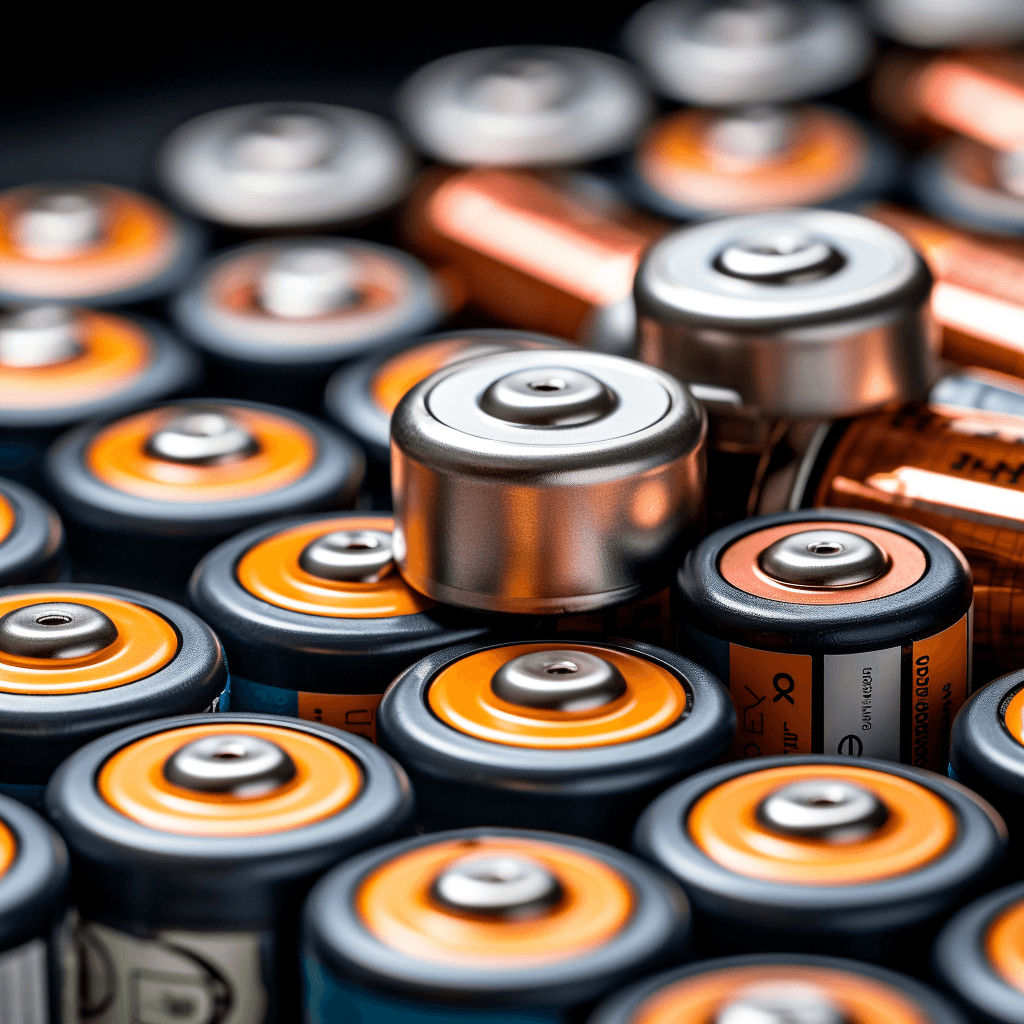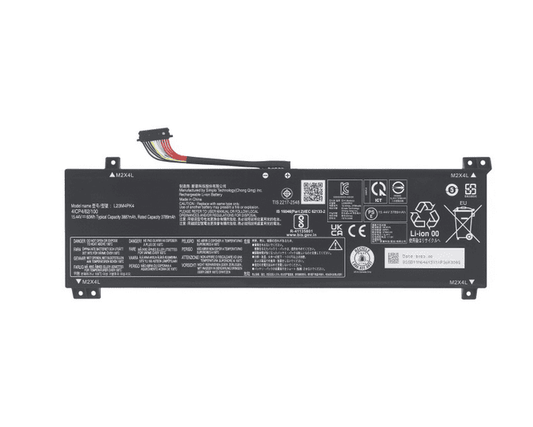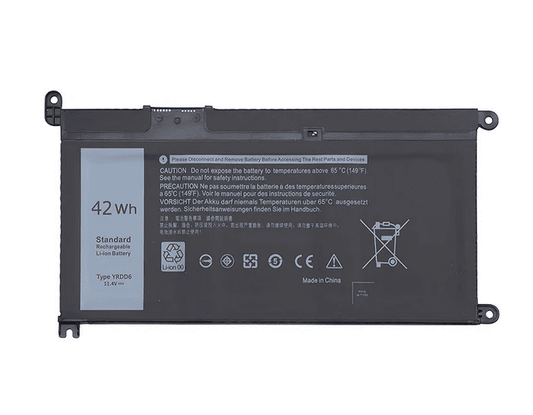
The Crucial Role of Regulatory Recalls in Ensuring Battery Safety
Share
We live in an age where battery-powered devices are omnipresent—from the smartphones in our pockets to the electric cars on our roads. But as the technology advances, the inherent risks associated with batteries can't be ignored. There have been a multitude of cases in which defective batteries have led to fires, explosions, and other forms of harm, raising legitimate concerns about safety. Therefore, regulatory recalls are not just a formality but a crucial mechanism to ensure public safety.
In this comprehensive article, we'll delve into the intricacies of battery safety and why regulatory recalls are an essential facet of it. We'll explore different types of battery-related incidents, dissect the regulatory framework that governs battery safety, and examine how recalls contribute to consumer protection. Along the way, we'll also consider international perspectives on battery regulation and ponder the future challenges and solutions in this area.
Join us on this insightful journey to better understand why regulatory recalls are integral to maintaining a safe environment in a world increasingly dependent on battery-powered devices.

The Importance of Battery Safety
As we continue to integrate technology into our daily lives, the sheer volume of battery-powered devices is staggering. It's not just about convenience; these devices also have significant economic impacts. The global market for rechargeable batteries was valued at approximately $113 billion in 2019 and is projected to reach nearly $140 billion by 2027. But along with this growth comes the amplified risk of battery-related incidents.
Battery safety is a multi-faceted concern. It affects not only individual consumers but also the companies that manufacture these products. A single safety mishap can erode customer trust, leading to a decline in sales and brand value. Furthermore, defective batteries can result in legal consequences for manufacturers, adding another layer of complexity to this issue.
Financial Impact
When recalls occur, they are not only costly but can also tarnish a brand's reputation. For instance, Samsung's infamous Galaxy Note 7 recall in 2016 reportedly cost the company as much as $5.3 billion, along with incalculable damage to its brand image.
Environmental Concerns
Moreover, battery safety is an environmental issue. Defective or improperly disposed of batteries can leak harmful chemicals into the environment, further emphasizing the need for stringent safety measures.
Health and Safety
Most importantly, battery-related incidents can pose direct risks to human health, ranging from minor burns to life-threatening injuries. For example, in the United States, there were an estimated 1,201 emergency department-treated injuries associated with batteries in 2019, according to the Consumer Product Safety Commission.
Therefore, as we continue to rely more heavily on battery-powered devices, the importance of maintaining rigorous safety standards cannot be overstated. Regulatory recalls serve as one of the most effective tools for achieving this goal.

Types of Battery-Related Incidents
Understanding the types of incidents related to batteries can help us appreciate why regulatory recalls are a necessary tool for maintaining safety. While all batteries have some risk associated with them due to the chemicals and reactions they contain, certain types are more prone to issues than others.
Lithium-ion Batteries
These are commonly found in consumer electronics like smartphones, laptops, and electric vehicles. While they offer high energy density and long lifespans, they can be volatile if damaged or defective, potentially causing fires or explosions. For example, the Federal Aviation Administration (FAA) reported 265 incidents involving lithium-ion batteries on planes from 1991 to 2020.
Alkaline Batteries
These batteries, often found in remote controls and toys, are generally considered safer but can still leak a corrosive substance if damaged or improperly installed.
Lead-Acid Batteries
These are used mainly in automotive and industrial applications. Although less likely to catch fire than lithium-ion batteries, they contain hazardous materials that can be harmful if leaked.
NiMH (Nickel-Metal Hydride) Batteries
Used in hybrid cars and some older mobile devices, these batteries are less volatile than lithium-ion batteries but can still suffer from issues like overheating.
Common Incidents
- Overheating: Caused by design defects or improper usage, overheating can damage the device and potentially harm the user.
- Fire and Explosion: These extreme cases often occur due to manufacturing defects, faulty designs, or misuse.
- Chemical Leaks: Corrosive chemicals leaking from batteries can damage devices and pose health risks if they come into contact with skin.
- Swelling: This occurs when gases build up inside a battery. It usually doesn't lead to explosions but can cause the battery to deform, damaging the device.
- Short Circuit: Occurs when the anode and cathode in a battery come into direct contact, often due to a design flaw or external damage.
Understanding these various types of incidents helps underline the importance of vigilant regulation and the timely recall of defective products.
The Regulatory Framework for Battery Safety
Given the potential risks associated with batteries, various regulatory bodies exist to enforce safety standards. Their role involves not only setting guidelines but also overseeing recalls when defective batteries make it to market. Here are some of the key organizations and their respective roles:
United States
- Consumer Product Safety Commission (CPSC): The CPSC has jurisdiction over consumer batteries and can issue recalls for products deemed unsafe. They have established various standards, including the ANSI C18 series of standards for portable batteries.
- Federal Aviation Administration (FAA): This body sets guidelines for the transportation of batteries, especially lithium-ion batteries, on airplanes.
- National Highway Traffic Safety Administration (NHTSA): This organization deals with automotive batteries, particularly for electric and hybrid vehicles.
European Union
- European Chemicals Agency (ECHA): ECHA is responsible for the Registration, Evaluation, Authorization, and Restriction of Chemicals (REACH) regulation, which applies to batteries.
- European Aviation Safety Agency (EASA): Like the FAA, this body oversees the safe transportation of batteries in European airspace.
Asia
- China Compulsory Certificate (CCC): In China, the CCC is necessary for products, including batteries, to be sold legally. It ensures they meet certain safety and quality standards.
- Ministry of Economy, Trade, and Industry (METI) in Japan: This organization oversees battery safety standards and issues guidelines for safe production.
International Bodies
- International Electrotechnical Commission (IEC): This is a global organization that sets international standards for all electrical, electronic, and related technologies, including batteries.
- United Nations (UN): The UN has developed international shipping regulations for lithium batteries to ensure safety during air, sea, and land transportation.
Recall Mechanisms
Most of these bodies have defined processes for initiating recalls. For instance, the CPSC in the U.S. can initiate a recall based on consumer complaints, reports from manufacturers, or its own investigations.
Understanding the regulatory framework helps us appreciate the complexity of ensuring battery safety across various types of devices and international boundaries. Regulatory recalls serve as the last line of defense to protect consumers from defective or dangerous products.

Case Studies: Major Battery Recalls in the Past
Real-life incidents offer valuable lessons in understanding the importance of regulatory recalls for battery safety. Below, we delve into some high-profile cases that highlight the dire consequences of battery malfunctions and the critical role that regulatory recalls play.
Samsung Galaxy Note 7
One of the most infamous battery recall events in recent years involved Samsung's Galaxy Note 7 smartphones. Released in 2016, the device's lithium-ion batteries had a flaw that made them prone to overheating, catching fire, or even exploding. Samsung initially tried to address the issue by replacing the batteries, but the problem persisted. Eventually, the company had to recall more than 2.5 million units, resulting in an estimated loss of $5.3 billion.
Sony Laptop Batteries
In 2006, Sony had to recall approximately 9.6 million lithium-ion batteries used in laptops made by Apple, Dell, Lenovo, and other brands. The recall followed incidents where these batteries overheated and sometimes even caused fires. The episode severely tarnished Sony's image as a reliable supplier of lithium-ion batteries and caused considerable financial damage.
Fisher-Price Power Wheels
In the late 1990s, Fisher-Price had to recall around 10 million of its "Power Wheels" battery-operated toy vehicles. Faulty wiring led to overheating and fires, even when the toy was not in use. The recall involved a massive outreach effort to alert consumers and proved to be a logistical nightmare for the company.
Boeing 787 Dreamliner
In 2013, the aviation industry faced a significant challenge when two lithium-ion batteries caught fire in Boeing 787 Dreamliner aircraft. The Federal Aviation Administration (FAA) and other aviation authorities worldwide grounded all 787s until the issue was resolved. Boeing had to redesign the battery system, which not only delayed deliveries but also affected the company's reputation.
Kidde Fire Extinguishers
While not a battery, the recall of Kidde fire extinguishers in 2017 serves as a cautionary tale of how a device meant to ensure safety can become a hazard itself. The failure of this crucial tool led to one death and multiple injuries, emphasizing the need for robust regulatory oversight in all safety-related products.
These case studies underscore the gravity of battery safety failures and the vital role that regulatory recalls play in mitigating risks. They serve as a grim reminder of what's at stake and why we must take battery safety seriously.
How Regulatory Recalls Work
After a battery or battery-powered device has been identified as defective or potentially dangerous, regulatory agencies kick into action. The process often involves several stages, each crucial for ensuring consumer safety. Here's a broad overview:
Identification of Defect
The first step is identifying the defect, which can be done through various means:
- Consumer Reports: Customers may report malfunctions or hazards directly to the manufacturer or regulatory bodies.
- Company Disclosure: In some cases, the manufacturer identifies a defect during quality control or post-market surveillance and voluntarily reports it to authorities.
- Government Oversight: Regulatory agencies may also discover defects during their routine inspections or monitoring.
Initial Response
Once a defect is identified, the manufacturer often stops production and sales immediately, pending investigation. In some cases, like that of Samsung's Galaxy Note 7, airlines and other entities may ban the use of the product even before an official recall.
Investigation and Validation
The defect must be confirmed through rigorous testing. Regulatory agencies may collaborate with the manufacturer or employ independent labs to verify the issue.
Recall Announcement
After confirming the defect, a public recall announcement is made, outlining:
The nature of the defect
Affected products (including model numbers, manufacturing dates, etc.)
Steps for consumers to get a refund, replacement, or repair
Logistics of the Recall
Depending on the severity and scale of the defect, various methods may be used to retrieve defective products:
- Return to Manufacturer: Consumers are instructed to send the product back to the manufacturer.
- Return to Retailer: Products can often be returned to the store where they were purchased.
- On-Site Repair: For larger items, like electric vehicles, a technician may perform repairs on-site.
- Remote Fixes: In some cases, software updates can resolve the issue, eliminating the need for physical returns.
Post-Recall Monitoring
After the recall is executed, both the manufacturer and regulatory agency typically engage in monitoring to ensure no further incidents occur and that the remediation was effective.
Recalls are an intricate and resource-intensive process, necessitating coordination between government bodies, manufacturers, and consumers. They serve as the last-resort safety net to protect the public from unsafe products, emphasizing the crucial role they play in the landscape of battery safety.
The Future of Battery Safety and Regulatory Recalls
As technology continues to evolve, so too do the complexities surrounding battery safety. Future developments are likely to significantly influence how regulatory recalls are handled, making it essential to keep an eye on emerging trends.
Advances in Battery Technology
New battery technologies, such as solid-state batteries and graphene-based cells, promise higher energy densities and safety levels. However, these innovations will also require updated safety regulations and testing protocols, emphasizing the need for regulatory bodies to stay abreast of technological advancements.
Internet of Things (IoT)
The proliferation of IoT devices amplifies the sheer number of batteries in our daily lives, increasing the potential risks and complexities of recalls. Regulatory bodies will need to consider how to manage recalls for interconnected systems where a single faulty battery could impact multiple devices.
Globalization
As batteries and battery-powered devices continue to be manufactured and sold globally, international cooperation will become more critical in ensuring safety standards and executing recalls.
Artificial Intelligence and Big Data
Emerging technologies like AI and big data analytics offer new ways to monitor for defects and automate recalls. These technologies can sift through vast amounts of data to identify potential risks much quicker than traditional methods.
Consumer Awareness
As consumers become more educated about the risks associated with batteries, they may also become more proactive in reporting issues. Increased public awareness can aid in more swift identification and action regarding faulty batteries.
Sustainability Concerns
The push for more sustainable and recyclable batteries poses another set of challenges and considerations for regulatory bodies, especially when these greener options are new to the market and haven't undergone long-term safety evaluations.
Conclusion
As we look towards the future, one thing remains clear: the crucial role of regulatory recalls in ensuring battery safety will only grow in importance. By staying vigilant and adapting to new technological landscapes, we can hope to mitigate risks and protect consumers effectively. Ensuring the safety of batteries is not merely a technological challenge but a societal one, requiring the collective efforts of manufacturers, regulators, and consumers alike.




